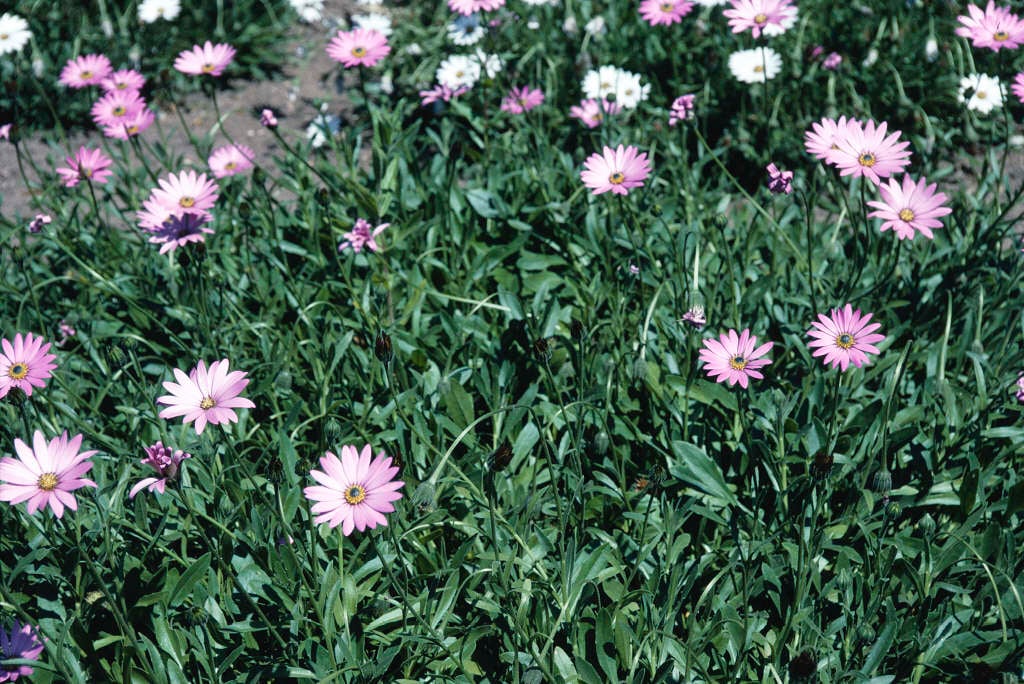Dimorphotheca jucunda 'Langtrees'
African daisy 'Langtrees'
'Langtrees' is a bushy perennial with narrowly lance-shaped leaves and long-stalked flowers 6.5cm across, with purplish-pink rays and yellow disk

Size
Ultimate height
0.1–0.5 metresTime to ultimate height
2–5 yearsUltimate spread
0.1–0.5 metresGrowing conditions
Moisture
Well–drainedpH
Acid, Alkaline, NeutralColour & scent
| Stem | Flower | Foliage | Fruit | |
| Spring | Pink | Green | ||
|---|---|---|---|---|
| Summer | Pink | Green | ||
| Autumn | Pink | Green | ||
| Winter | Green |
Position
- Full sun
Aspect
South–facing or East–facing
Exposure
Exposed or ShelteredDrought resistance
Yes Hardiness
H3Botanical details
- Family
- Asteraceae
- Native to GB / Ireland
- No
- Foliage
- Evergreen
- Habit
- Bushy
- Potentially harmful
- Pets (rabbits, rodents): Harmful if eaten. For further information and contact numbers regarding pets, see the HTA guide to potentially harmful plants
- Genus
Dimorhotheca can be annuals or woody-based, evergreen perennials with simple, alternate leaves and large daisy-like flower-heads in summer and autumn
- Name status
Accepted
How to grow
Cultivation
Grow in light, moderately fertile, well-drained soil in a warm, sunny position. In frosty areas overwinter cuttings under glass
Propagation
Propagate by softwood cuttings in late spring or semi-hardwood cuttings in late summer
Suggested planting locations and garden types
- City and courtyard gardens
- Mediterranean climate plants
- Coastal
- Cottage and informal garden
- Gravel garden
- Patio and container plants
- Flower borders and beds
Pruning
No pruning required
Pests
May be susceptible to aphids
Diseases
May be subject to a downy mildew and Verticillium wilt
Get involved
The Royal Horticultural Society is the UK’s leading gardening charity. We aim to enrich everyone’s life through plants, and make the UK a greener and more beautiful place.